Waterfog úðastúta naglanir
|
|
| A fire in an open attic.
The fire has not gone through the roof.
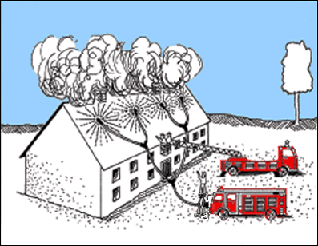
-
Punch in your Fognail Restrictor where you judge the fire to be most intense at gaps of 5 -7 meters and 1.5 meter from the top
-
When the Fognails have been punched in and begin to disperse water, it is the duty of the fireman who regulates the flow of water from branch hoses or engine to be attentive to the appearance of the smoke coming out of the house.
-
If the smoke is black or yellowish the Fognail must be open.
-
When the smoke is getting white it is time to shut the Fognail.
-
This will normally take 15-20 seconds.
Then shut the Fognails for 1-2 minutes.
The open them for 10-12 seconds.
Then shut the Fognails again for 1 - 2 minutes.
-
Continue with extinguishing according to the interval sequence above until the BA firefighter can do the final indoor extinguishing.
|
|
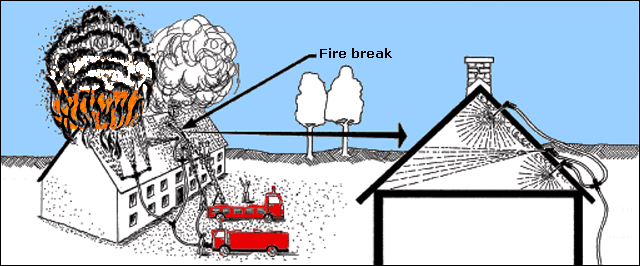
The fire has gone through the roof.
-
Form a fire break in the open attic by making a dense fog curtain. You will use your Fognail Attack and Fognail Restrictors as shown above. Then look for any small fires behind the fire break, during the extinguishing process.
-
You might also want to hose water onto the segment of the roof where your Fognails are placed, and even behind the fire break to make absolutely sure that the fire will not spread under the tiles of that very line.
-
If the roof has more than one layer, 1 meter of the roof from the top down to the eaves must be removed on either side of the roof where the fire break is to be made. This area is to be hosed from outside.
-
Under no circumstances must the fire cross the fire break. Therefore the Fognails must be open until you are sure that the fire has diminished. In this case there will be water damages below the fire break.
|
|
| A fire in a furnished attic.

The fire has not gone through the roof.
-
To extinguish a fire in a furnished attic you must reach all areas of the fire.
-
The uppermost Fognail is punched in 1 meter from the top of the roof.
-
The next Fognail is punched in at the upper end of the window and the last Fognail 1 meter from the gutter.
-
The possible fire areas below the top of the roof and at the lower end are smaller areas so the Fognails are to be open 5 - 8 seconds. And shut for 1 - 2 minutes.
-
Continue with extinguishing according to this sequence. Be observant to the smoke's appearance.
| The fire can also be put out from the gables of the house. In that case choose the Fognail Attack for the hidden areas. |
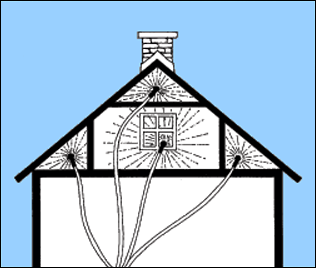 |
Ramification of the branches of the Fognail.
On a flat roof
On a saddle roof
-
1- 2-storey houses. Make the ramification on the ground. (If the Fognail can be reached with 1 length of narrow hose.)
-
3-storey houses or higher. Make the ramification on the roof. Fix the branch firmly.
Note !!! Clean the filter of the Fognail after every job!
|
|
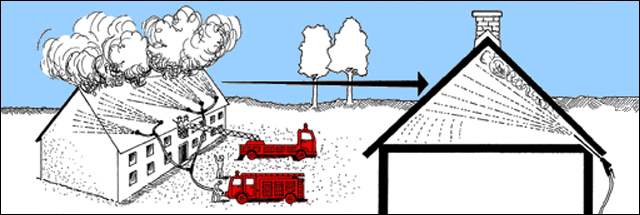
Risking too much fighting fires in the roof.
-
Punch in the Fognail Attack at the bottom of the roof and direct the water upwards, toward the fire, as indicated above.
-
You can also fight from the gables as shown in the picture above .
|
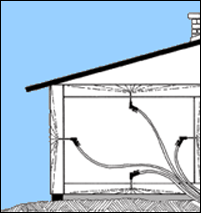
A fire in partitions and double floors
|
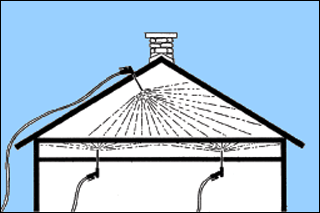
A fire in multiple layer roofs
-
The fire is fought both from above and below. All the fire areas can be reached through the roof construction.
-
Open the Fognails only 3 - 4 seconds extinguishing the small fire areas using the aforementioned predetermined intervals.
|
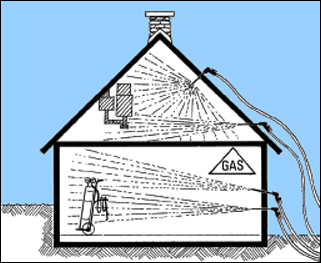
Increased Safety
-
The increased use of pieces of apparatus under pressure like aerosol cans, welding tubes and so on increase the risks for BA firefighters in factories and homes.
-
If an explosion occurs the risk of personal injuries is reduced since the firefighting is done with the Fognail.
-
The flow of water is controlled from the branches or from the fire engine.
|
|
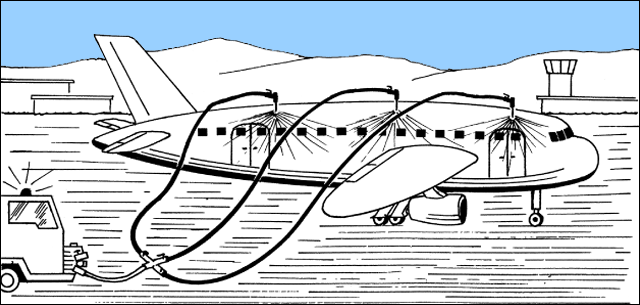
|
|
|
| It's hard to perform firefighting from the emergency exits. Therefore the Fognail Restrictors are used from the outside. |











